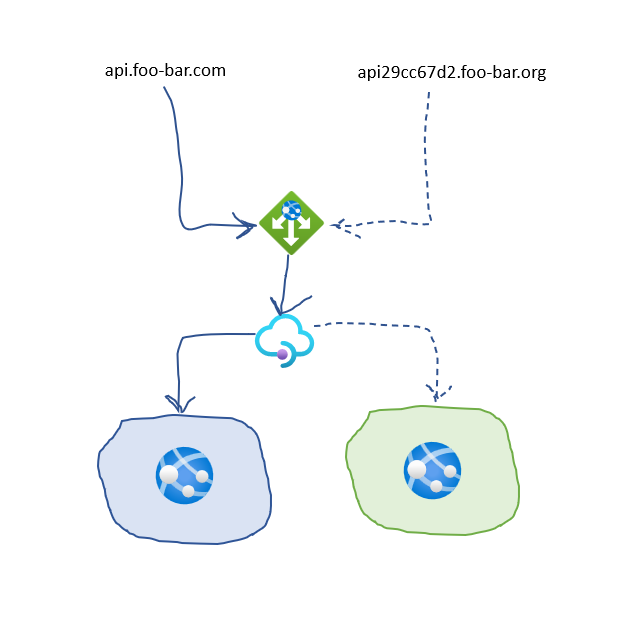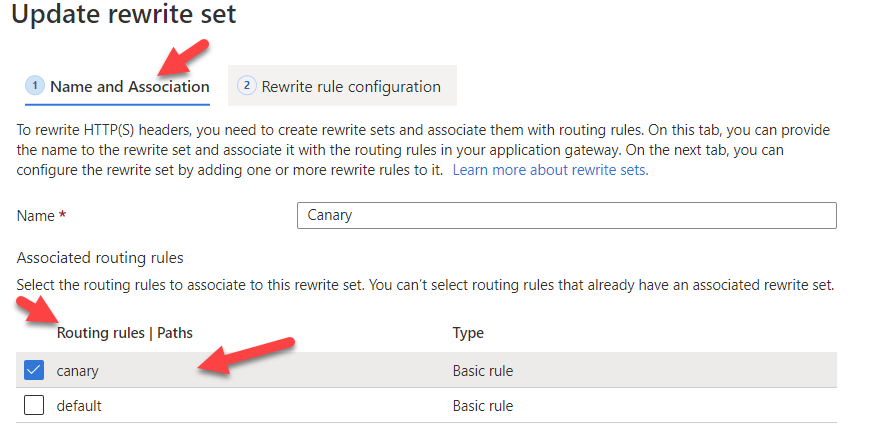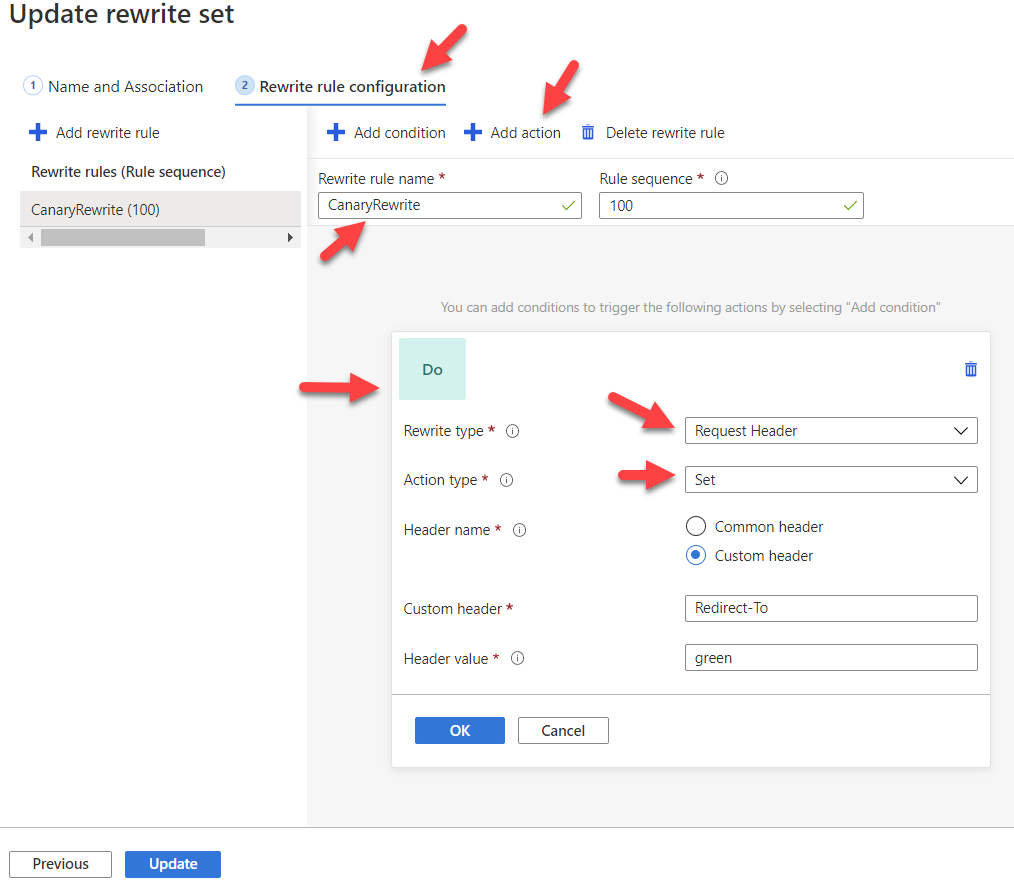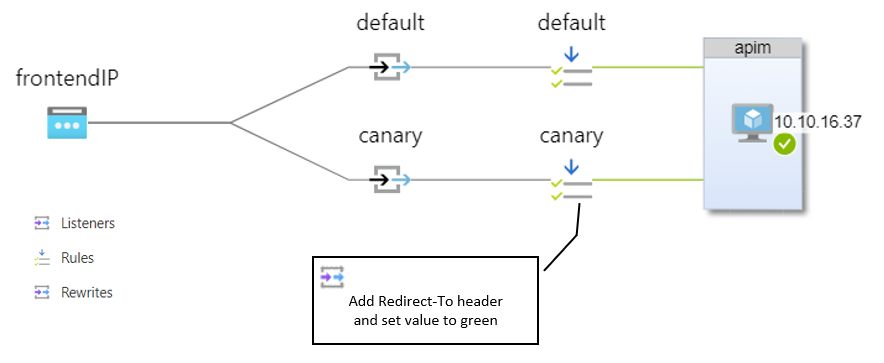
If you use Azure API Management and want to adapt blue-green deployment or provisioning model, APIM has functionality that allows you to implement a canary traffic orchestration at the policy level.
In my previous post I wrote about how to do blue-green testing with Azure Front Door and API Management, but I will repeat the use-case description and requirements here as well.
Here is a typical scenario for how blue-green infrastructure provisioning works:
- you have an active version of your infrastructure provisioned and deployed to a slot that we will call the
blueslot - you introduce a new version of your infrastructure and deploy it into a new slot - the
greenslot - you configure APIM to send some small percentage (let’s say 10%) of the traffic to the
greenslot - you monitor logs and if all looks good, you switch all 100% of the traffic to the
greenslot and decommission theblueone
Now, I want to test my new version (the green slot) before I open traffic for canary testing. How do I do that?
In this post I will focus on the use-case when APIM is deployed to a private VNet with Internal mode and exposed publicly with Azure Application Gateway.
Application Gateway Configuration
Here is what you typically need to configure at Application Gateway:
Http Listeners
A listener is a logical entity that checks for incoming connection requests by using the port, protocol, host, and IP address. In my example, there is one listener called default configured as a custom domain api.foo-bar.org.
Backend pools
A backend pool routes request to backend servers, which serve the request. In my example, there is one backend called apim pointing to APIM instance.
Routing rules
A request routing rule determines how to route traffic on the listener. The rule binds the listener and the back-end pool. In my example, there is a rule called default that links default listener with apim backend pool.
Here is how AGW configuration looks like from the Monitoring/Insights view (still in Preview)

Canary configuration
AGW allows you to configure more than one listener, routing rule and backend pool, so, when I need to test the new inactive infrastructure slot, I can add an extra listener, let’s call it canary, receiving requests from the test host api29cc67d2.foo-bar.org, and new routing rule that binds canary listener with apim backend pool, and let’s call it canary as well.
With this new set of components in place, here is how AGW configuration will look like:

Rewrite HTTP headers
Application Gateway supports rewrite HTTP headers of requests and responses. It allows you to add conditions to ensure that specified headers are rewritten only when certain conditions are met. Application Gateway uses server variables to store useful information about the server, the connection with the client, and the current request on the connection. You can use these variables to evaluate rewrite conditions and rewrite headers.
For my case, I want to enrich all requests coming through canary routing rules with extra header Redirect-To with value set to green.
This is how Rewrite set configuration looks at the Portal:
First, select what Routing rules that you want rewrite set to be associated with. In my case, I only want to enrich request headers for canary routing rule.

Next, configure your rewrite set. I want to enrich all requests coming through canary routing rules by adding new Redirect-To header before AGW forwards the requests to the backend, therefore there is no Conditions and only one Action called CanaryRewrite that adds new Redirect-To header with value green.

Here is how the AGW configuration will look like when rewrite set is assigned to the canary routing rule:

APIM policies
At the API Management side I need to implement a choose policy that checks if requests contain Redirect-To header, and if so, use set-backend-service policy to redirect the incoming request to the backend hosted at the green slot.
Putting it all together
“Default” traffic flow
Here is how this setup will work when I call the “default” url:
curl --get https://api.foo-bar.org/foo

- Application Gateway receives traffic from the
api.foo-bar.orglistener - AGW uses
defaultrouting rule - There is no Rewrite set associated with
defaultrouting rule - Request is sent to the APIM backend
- APIM policy identifies that there is no header
Redirect-Toat the request and routes the request to the App Service hosted at the active slot (blue)
Traffic to inactive slot
When I call “inactive” frontend
curl --get https://api29cc67d2.foo-bar.org/foo
the following set of actions will take place:

- Application Gateway receives traffic from the
api29cc67d2.foo-bar.orglistener - AGW uses
canaryrouting rule - AGW identifies that
canaryrouting rule hasCanaryRewriterewrite set assigned - AGW will add
Redirect-Toheader with valuegreento the request - Request is sent to the APIM backend
- APIM policy identifies that header
Redirect-Toexists with valuegreenand routes the request to thegreenApp Service
Next time I will describe how to test inactive slot just by using the built-in APIM functionality. Stay tuned!
Useful links
- What is Azure Application Gateway?
- Azure Application Gateway documentation
- Application gateway components
- Application Gateway configuration overview
- AGW: listeners
- AGW: backend pool
- AGW: request routing rule
- AGW: Rewrite HTTP headers of requests and responses
- APIM control flow policy
- APIM set backend service policy
- How to use Azure API Management with virtual networks
With that - thanks for reading :)